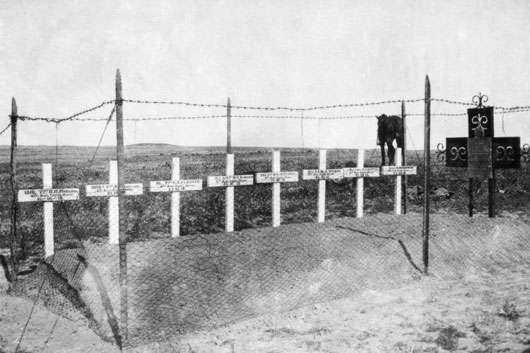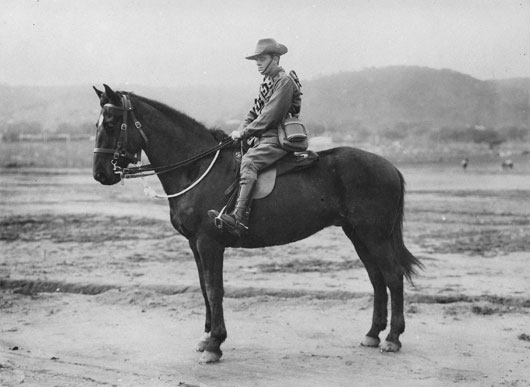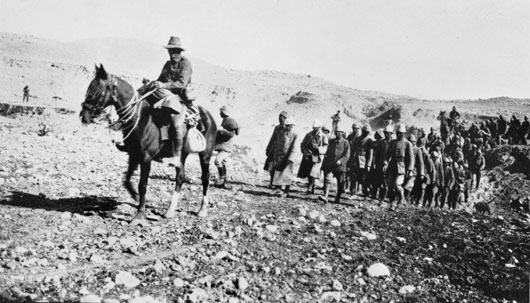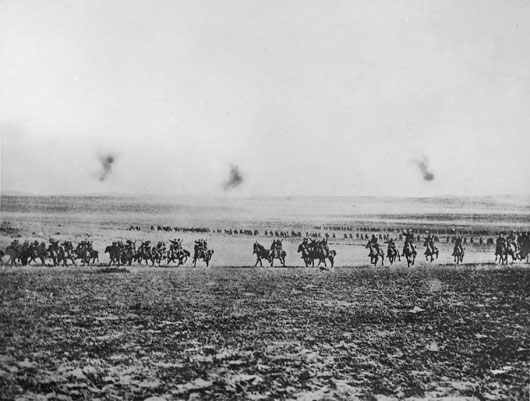Beersheba The Charge of the 4th Light Horse, 1917
The Battle in Brief
The charge of the 4th Australian Light Horse at Beersheba late in the afternoon of 31 October 1917, is remembered as the last great cavalry charge. The assault on Beersheba began at dawn with the infantry divisions of the British XX Corps attacking from the south and south-west. Despite artillery and air support, neither the infantry attacks from the south, or the Anzac Mounted Division’s attack from the east had succeeded in capturing Beersheba by mid-afternoon.
With time running out for the Australians to capture Beersheba and its wells before dark, Lieutenant General Harry Chauvel, the Australian commander of the Desert Mounted Corps, ordered Brigadier General William Grant, commanding the 4th Light Horse Brigade, to make a mounted attack directly towards the town. Chauvel knew, from aerial photographs, that the Turkish trenches in front of the town were not protected by barbed wire. However, German bombing had forced the 4th Brigade into a scattered formation and it was not until 4.50 pm that they were in position. The Brigade assembled behind rising ground 6 kilometres south-east of Beersheba with the 4th Light Horse Regiment on the right, the 12th Light Horse Regiment on the left and the 11th Light Horse Regiment in reserve.
The Australian Light Horse was to be used purely as cavalry for the first time. Although they were not equipped with cavalry sabres, the Turks who faced the long bayonets held by the Australians did not consider there was much difference between a charge by cavalry and a charge by mounted infantry. The Light Horse moved off at the trot, and almost at once quickened to a gallop. As they came over the top of the ridge and looked down the long, gentle open slope to Beersheba, they were seen by the Turkish gunners, who opened fire with shrapnel. But the pace was too fast for the gunners. After three kilometres Turkish machine-guns opened fire from the flank, but they were detected and silenced by British artillery. The rifle fire from the Turkish trenches was wild and high as the Light Horse approached. The front trench and the main trench were jumped and some men dismounted and then attacked the Turks with rifle and bayonet from the rear. Some galloped ahead to seize the rear trenches, while other squadrons galloped straight into Beersheba.
Nearly all the wells of Beersheba were intact and further water was available from a storm that had filled the pools. The 4th and 12th Light Horse casualties were thirty-one killed and thirty-six wounded; they captured over 700 men. The capture of Beersheba meant that the Gaza-Beersheba line was turned. Gaza fell a week later and on 9 December 1917, the British troops entered Jerusalem.
Location
Media






